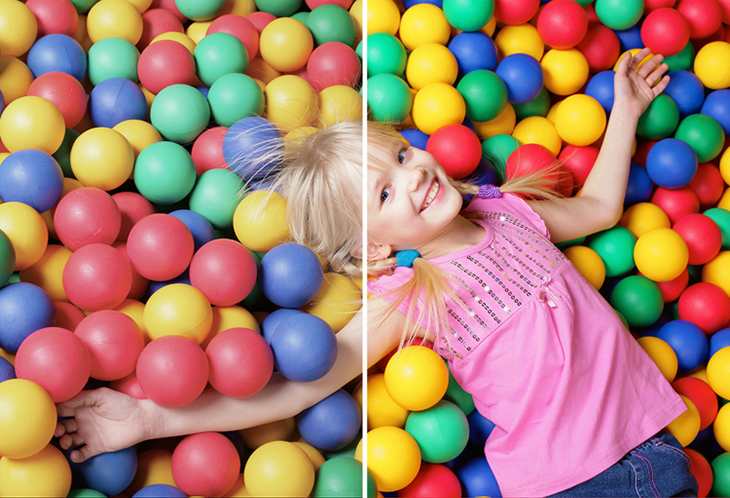High Dynamic Range, also known as HDR in the digital realm is the buzzword surrounding TVs. Almost all high-end TVs in 2017 have HDR capability as HDR content is becoming more common. Streaming applications like Amazon Video, Netflix, and Roku Premiere+ along with devices like Ultra HD Blu-ray, PS4, and XBox One S, all support HDR format. So why the hype around HDR? Why are more TVs and HD source devices such as 4K Blu-ray implementing HDR technology? Is HDR the future of TV? Let’s dive into this topic and answer all your common questions.
The Limitations of Standard Dynamic Range
Before we cover the ins and outs of HDR, let’s first learn about its predecessor: standard dynamic range, or SDR. All the content we are accustomed to that is not high dynamic range is using SDR. SDR can only show so much information based on the physical boundaries presented by older technologies. Currently, broadcast television and even Blu-ray discs are limited to the information they can send based on SDR format. The triangle on the left image (Rec. 2020) illustrates what can be achieved with UHDTV, while the triangle on the right image (Rec 601/709 color space) shows SDR.

The difference between how dark and bright your TV can get is contrast. Dynamic range describes the extremes in that variation and how much detail can be shown in between. Essentially, dynamic range is display contrast. HDR represents broadening that contrast by pushing more data, which is achievable with HDMI 2.0 and above.
The Future of TV is High Dynamic Range
HDR breaks through the limitations of older video signals and offers color and brightness information across a more comprehensive range. An HDR-capable television can read the extensive data sent from an HDR source, such as an Ultra HD Blu-ray player, to develop an image from a broader spectrum of color, contrast, and brightness.
HDR video contains extensive data allowing for a more natural look to generate onto the screen. Rosy cheeks flushed pinkish-red when someone blushes appear more pronounced. The colors of orange, red, and violet from a sunset and the changing of light to dark from the rays beaming across layers of clouds become more dramatic. What this means is the very bright and dark objects on the screen are shown significantly brighter and darker if the TV is capable of it.
The Technology Behind High Dynamic Range
LCD panels now have organic LED (OLED), and local dimming LED backlighting systems helping to increase the dynamic range. These TVs reach extremes of light to dark and deeper color with a wide color gamut (WCG). WCG is often linked with HDR; in this case, it also drives HDR technology because it is a feature of its own. Where HDR is an advance in the dynamic range of the picture, with brighter highlights, in particular, WCG is an expansion in color. WCG creates a plethora of colors to work with HDR.
The color spectrum amplifies exponentially. With HDTVs using SDR, roughly 16.7 million colors are possible. You may think that’s a lot, but with WCG over a billion colors are possible. Nope, that’s not a typo. Let that sink in as you ponder if your eyes can even see that many colors!

HDR and WCG remove the limitations presented by older video signals and provides information about color and brightness across a much broader range. HDR-capable TVs can read the data and show a picture built from a wider gamut of color, light, and dark.
Is HDR Worth All The Hype?
If you’re asking me, my answer is an emphatic YES! Don’t take my word for it—you have to see it for yourself. Experts on the content side and the TV side are excited about HDR and WCG that they are taking classes for it. The BZB Express Office recently hosted an ISF Calibration Display Imaging Seminar to cover the parameters of display standards, calibration, digital imaging, and HDR. While 4K was able to bring us more pixels and an increase in resolution, creating better pixels has been the challenge all along. Quality pixels trump quantity, but having both can forever change how we experience TV.

 BZBtv
BZBtv DIY
DIY TECH TRENDS
TECH TRENDS


